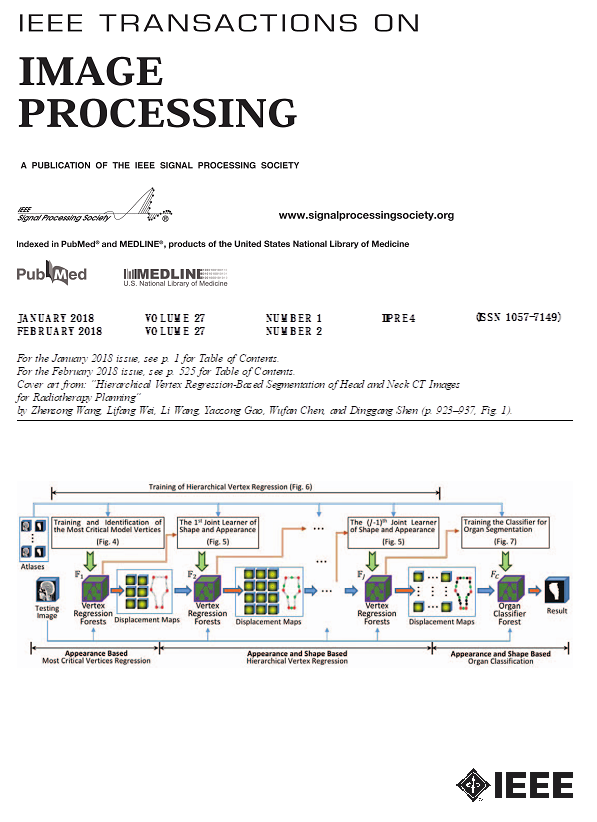Motion Feature Aggregation for Video-Based Person Re-Identification
IF 13.7
1区 计算机科学
Q1 COMPUTER SCIENCE, ARTIFICIAL INTELLIGENCE
引用次数: 5
Abstract
Most video-based person re-identification (re-id) methods only focus on appearance features but neglect motion features. In fact, motion features can help to distinguish the target persons that are hard to be identified only by appearance features. However, most existing temporal information modeling methods cannot extract motion features effectively or efficiently for v ideo-based re-id. In this paper, we propose a more efficient Motion Feature Aggregation (MFA) method to model and aggregate motion information in the feature map level for video-based re-id. The proposed MFA consists of (i) a coarse-grained motion learning module, which extracts coarse-grained motion features based on the position changes of body parts over time, and (ii) a fine-grained motion learning module, which extracts fine-grained motion features based on the appearance changes of body parts over time. These two modules can model motion information from different granularities and are complementary to each other. It is easy to combine the proposed method with existing network architectures for end-to-end training. Extensive experiments on four widely used datasets demonstrate that the motion features extracted by MFA are crucial complements to appearance features for video-based re-id, especially for the scenario with large appearance changes. Besides, the results on LS-VID, the current largest publicly available video-based re-id dataset, surpass the state-of-the-art methods by a large margin. The code is available at: https://github.com/guxinqian/Simple-ReID.基于视频的人物再识别运动特征聚合
大多数基于视频的人物再识别(re-id)方法只关注外表特征,而忽略了动作特征。事实上,运动特征可以帮助识别仅凭外表特征难以识别的目标人物。然而,现有的时间信息建模方法大多不能有效地提取基于视频的re-id的运动特征。在本文中,我们提出了一种更有效的运动特征聚合(MFA)方法来对基于视频的re-id进行特征映射级的运动信息建模和聚合。所提出的MFA包括:(i)粗粒度运动学习模块,该模块根据身体部位随时间的位置变化提取粗粒度运动特征;(ii)细粒度运动学习模块,该模块根据身体部位随时间的外观变化提取细粒度运动特征。这两个模块可以对不同粒度的运动信息进行建模,并且是互补的。该方法可以很容易地与现有的网络体系结构结合起来进行端到端训练。在四个广泛使用的数据集上进行的大量实验表明,MFA提取的运动特征是基于视频的re-id中外观特征的重要补充,特别是对于外观变化较大的场景。此外,LS-VID是目前最大的公开视频重新识别数据集,其结果远远超过了最先进的方法。代码可从https://github.com/guxinqian/Simple-ReID获得。
本文章由计算机程序翻译,如有差异,请以英文原文为准。
求助全文
约1分钟内获得全文
求助全文
来源期刊

IEEE Transactions on Image Processing
工程技术-工程:电子与电气
CiteScore
20.90
自引率
6.60%
发文量
774
审稿时长
7.6 months
期刊介绍:
The IEEE Transactions on Image Processing delves into groundbreaking theories, algorithms, and structures concerning the generation, acquisition, manipulation, transmission, scrutiny, and presentation of images, video, and multidimensional signals across diverse applications. Topics span mathematical, statistical, and perceptual aspects, encompassing modeling, representation, formation, coding, filtering, enhancement, restoration, rendering, halftoning, search, and analysis of images, video, and multidimensional signals. Pertinent applications range from image and video communications to electronic imaging, biomedical imaging, image and video systems, and remote sensing.
 求助内容:
求助内容: 应助结果提醒方式:
应助结果提醒方式:


